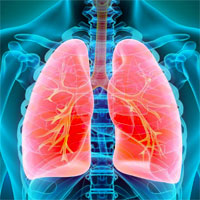Tag: mortality

Sepsis Patients can be Risk Stratified at the Time of Diagnosis
Multicenter Meta-Analysis Reveals Sepsis Patients can be Risk Stratified at the Time of Diagnosis Demonstrating Potential to Improve Critical Care Medicine on a Global Scale. For this study, the team identified a large collection... read more

Decision-making on withholding or withdrawing life-support in the ICU
Many critically ill patients who die will do so after a decision has been made to withhold/withdraw life-sustaining therapy. Our objective was to document the characteristics of intensive care unit (ICU) patients with a decision... read more
Comparison of European ICU patients in 2012 (ICON) versus 2002 (SOAP)
Over the 10‑year period between 2002 and 2012, the proportion of patients with sepsis admitted to European ICUs remained relatively stable, but the severity of disease increased. In multilevel analysis, the odds of ICU... read more

Is Overall Mortality the Right Composite Endpoint in Clinical Trials of ARDS?
Most deaths in acute respiratory distress syndrome (ARDS) patients are not directly related to lung damage but to extrapulmonary multisystem organ failure. It would be challenging to prove that specific lung-directed therapies... read more

Early Hemorrhage Control and Management of Trauma-induced Coagulopathy
Trauma resuscitation should focus on early goal-directed therapy with use of viscoelastic hemostatic assays while initially applying a ratio 1:1:1 driven transfusion therapy (with red blood cells, plasma and platelets) in... read more

The Effects of Antibiotic Cycling and Mixing on Antibiotic Resistance in ICU
Whether antibiotic rotation strategies reduce prevalence of antibiotic-resistant, Gram-negative bacteria in intensive care units (ICUs) has not been accurately established. We aimed to assess whether cycling of antibiotics... read more

Polymyxin B‑immobilised Hemoperfusion and Mortality in Critically Ill Patients with Sepsis/Septic Shock
Sepsis and septic shock originate from a dysregulated immune response to pathogens and cause millions of deaths worldwide. Endotoxin, a principal component of the outer membrane of Gram-negative bacteria, is a potent trigger... read more

The Association Between ARDS Hospital Case Volume and Mortality
In this cohort, at both an individual- and hospital-level, higher acute respiratory distress syndrome hospital case volume is associated with lower acute respiratory distress syndrome hospital mortality. We analyzed 2,686... read more

The Effect of a Quality Improvement Intervention on Perceived Sleep Quality and Cognition in the ICU
An ICU-wide quality improvement intervention to improve sleep and delirium is feasible and associated with significant improvements in perceived nighttime noise, incidence of delirium/coma, and daily delirium/coma-free status.... read more

Prognostic Effects of Delirium Motor Subtypes in Hospitalized Older Adults
One in three acutely ill hospitalized older adults who suffered hypo-active or mixed delirium died in the hospital. Clinicians should be aware that hypo-active symptoms of delirium, whether shown exclusively or in alternation... read more

Effect of Emergency Department and ICU Occupancy on Admission Decisions and Outcomes for Critically Ill Patients
ICU admission decisions for critically ill emergency department patients are affected by medical ICU bed availability, though higher emergency department volume and other ICU occupancy did not play a role. Prolonged emergency... read more

Lower ARDS Mortality at High-Volume Intensive Care Units
For patients with acute respiratory distress syndrome (ARDS), mortality is lower in high-volume intensive care units (ICUs), according to a study presented at the annual meeting of the American Thoracic Society. The researchers... read more

Association of ICH Among Patients Taking Non–Vitamin K Antagonist vs Vitamin K Antagonist Oral Anticoagulants With In-Hospital Mortality
Among patients with ICH, prior use of NOACs or warfarin was associated with higher in-hospital mortality compared with no OACs. Prior use of NOACs, compared with prior use of warfarin, was associated with lower risk of in-hospital... read more

Differences in Impact of Definitional Elements on Mortality Precludes International Comparisons of Sepsis Epidemiology
Within a sepsis cohort, we illustrate case-mix heterogeneity using definitional elements (infection source and organ dysfunction). In the context of improving outcomes, we illustrate differential secular trends in impact... read more




